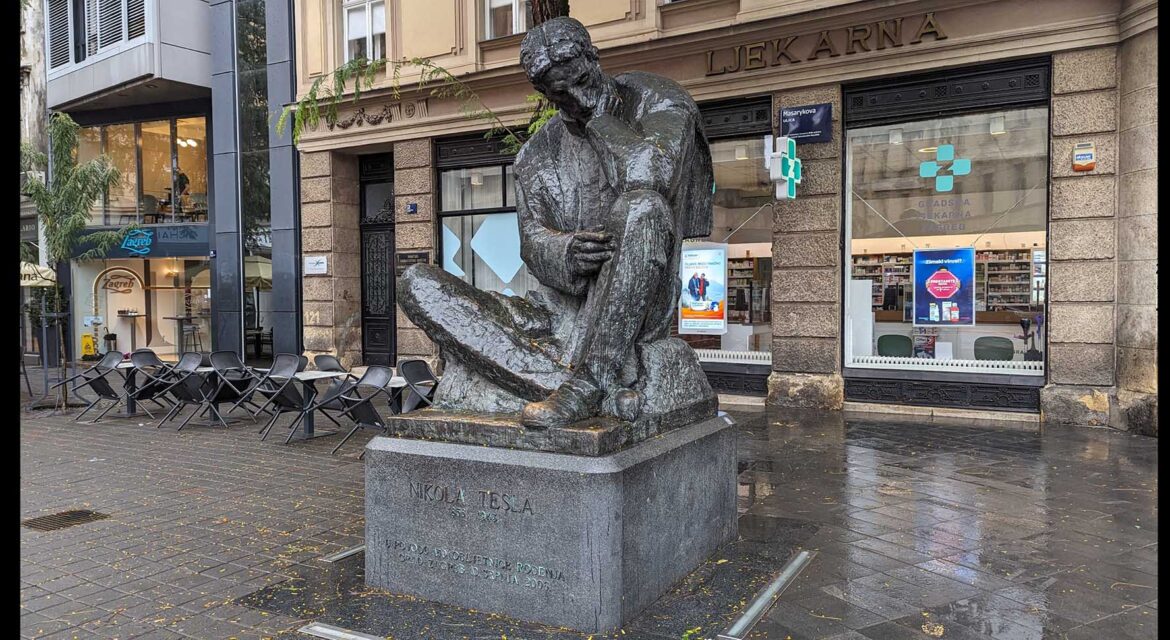Born and raised in modern-day  Croatia, the city of Zagreb has embraced the legacy of Nicola Tesla in meaningful ways. While numerous museums are dedicated to his technical genius, the Nikola Tesla Monument celebrates something much bigger for audiences and to the entire country.
Croatia, the city of Zagreb has embraced the legacy of Nicola Tesla in meaningful ways. While numerous museums are dedicated to his technical genius, the Nikola Tesla Monument celebrates something much bigger for audiences and to the entire country.

The Genius of Nikola Tesla
 Best known for his contributions to the design of the modern alternating current (AC) electricity supply system, Nikola Tesla was born in 1856 in what was then the Austrian Empire. In 1884 he emigrated to the United States where he worked on a number of experiments over the following decades until his death in 1943. Tesla’s genius began to be appreciated a few decades after, compelling a great deal of pride across Croatia after it emerged as an independent nation in 1991.
Best known for his contributions to the design of the modern alternating current (AC) electricity supply system, Nikola Tesla was born in 1856 in what was then the Austrian Empire. In 1884 he emigrated to the United States where he worked on a number of experiments over the following decades until his death in 1943. Tesla’s genius began to be appreciated a few decades after, compelling a great deal of pride across Croatia after it emerged as an independent nation in 1991.
This genius and legacy is evident in the Nikola Tesla Monument, which was created by world-renowned sculptor Ivan Meštrović. Originally installed in front of the Ruđer Bošković Institute in 1956, the piece depicts an oversized Tesla deep in thought, allowing audiences to experience his genius in action. In 2006, the monument was moved to its present location in the city center, in the street named after Nikola Tesla.
This location has allowed the community to thrive around it, with modern art decorating the street and shops and stores all around further celebrating the presence of a piece. A main feature of maps and guides to the city, the Nikola Tesla Monument appeals to residents and visitors for very different reasons, ensuring it will remain a mainstay in their hearts and minds.
When a Legacy Comes to Life
 Numerous monuments dedicated to Nikola Tesla are located across Croatia and the world, but none capture the power and vulnerability like the Nikola Tesla Monument. By celebrating these elements in such a profound way, the landmark showcases what it means to cultivate engagement in audiences of all eras.
Numerous monuments dedicated to Nikola Tesla are located across Croatia and the world, but none capture the power and vulnerability like the Nikola Tesla Monument. By celebrating these elements in such a profound way, the landmark showcases what it means to cultivate engagement in audiences of all eras.


